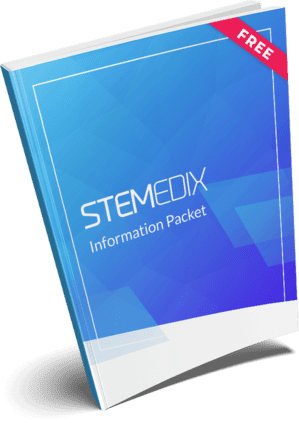
by admin | Jul 8, 2025 | Mesenchymal Stem Cells, Regenerative Medicine, Stem Cell Research, Stem Cell Therapy, Traumatic Brain Injury
Traumatic brain injury (TBI) is a major cause of disability worldwide, affecting over 50 million people each year. It can result from accidents, falls, sports injuries, or violent impacts. TBI can lead to immediate problems like loss of consciousness, confusion, and memory difficulties, and long-term consequences such as cognitive deficits, physical disabilities, speech challenges, and mood disorders.
In addition, TBI is associated with an increased risk of developing neurodegenerative diseases like Alzheimer’s and Parkinson’s disease. Traditional treatments focus on stabilizing patients and reducing immediate damage, but they rarely restore lost brain function or prevent chronic complications.
As part of this review, Zhang et al. outline the key pathological processes of (TBI) and the mechanisms by which mesenchymal stem cell (MSC) therapy may provide treatment. The authors also highlight current research progress, identify major limitations, and emphasize the promising potential of MSC-based approaches for TBI.
Complexity of Injury Mechanisms
TBI involves both primary and secondary injury mechanisms. Primary injury occurs at the time of trauma and involves direct mechanical damage to brain tissue. Secondary injury develops over hours to days and includes inflammation, oxidative stress, mitochondrial dysfunction, and neuronal apoptosis. These processes are partly driven by the disruption of the blood–brain barrier, allowing immune cells to enter the brain and trigger a persistent inflammatory response. Understanding these mechanisms is crucial because interventions during the secondary phase may reduce neuron death and improve recovery outcomes.
Consequences of TBI
Secondary injury after TBI can trigger widespread cellular and tissue damage. Inflammation, oxidative stress, and apoptosis disrupt brain function and can worsen physical and cognitive outcomes. Long-term consequences may include memory loss, reduced motor control, difficulty speaking, and emotional changes. Damage to neurons and supporting cells, such as astrocytes and microglia, contributes to these deficits. The adult brain has limited capacity to repair itself, which makes TBI particularly challenging to treat.
Promise of Mesenchymal Stromal Cell Therapy
MSCs are multipotent stem cells found in bone marrow, fat tissue, skeletal muscle, synovial membrane, and peripheral blood. They have the ability to self-renew, differentiate into multiple cell types, and migrate to sites of injury. MSCs offer potential treatment for TBI through multiple mechanisms. They promote healing not just by replacing damaged cells but also through paracrine signaling, the release of extracellular vesicles (EVs) such as exosomes, and direct cell–cell interactions. These vesicles carry proteins, RNA, and other molecules that cross the blood–brain barrier to reduce inflammation, stimulate neuron growth, and protect surviving brain cells. Clinical studies have shown that MSC therapy can improve motor and cognitive recovery in patients with neurological injuries, suggesting they are a promising regenerative therapy for TBI.
Targeting Mitochondrial Dysfunction
Mitochondria are the energy-producing organelles in cells, and damage to them is a major feature of secondary TBI injury. Dysfunctional mitochondria trigger oxidative stress, apoptosis, and energy deficits that worsen brain damage. MSCs can transfer healthy mitochondria to injured neurons and other cells through tunneling nanotubes, extracellular vesicles, and other mechanisms. This transfer restores cellular energy production, reduces inflammation, and prevents cell death. Mitochondrial transfer also regulates immune cells, shifting macrophages toward a healing, anti-inflammatory state. Research shows that this process improves neuron survival, angiogenesis, and overall functional recovery of brain tissue.
Combating Oxidative Stress
Excessive reactive oxygen species (ROS) produced after TBI can damage DNA, proteins, and cell membranes, leading to further cell death. MSCs counteract oxidative stress through multiple mechanisms. They enhance antioxidant activity, increase protective proteins like Bcl-2, and reduce harmful molecules. Exosomes from MSCs carry additional protective factors that restore ATP production and activate cell survival pathways. Studies in animal models show that MSCs and their exosomes help preserve neurons, reduce injury progression, and improve recovery, offering advantages over treatments that address only one aspect of oxidative damage.
Reducing Neuroinflammation
Neuroinflammation is a key driver of secondary injury in TBI. Damage to the blood–brain barrier allows immune cells to enter the brain, activating microglia and astrocytes. These glial cells release inflammatory cytokines such as IL-1, IL-6, and TNF-α, attracting more immune cells and extending inflammation from the acute to chronic phase. MSCs help regulate the inflammatory environment by releasing anti-inflammatory factors, promoting microglial polarization to the M2 healing phenotype, and reducing the infiltration of peripheral immune cells. Studies show that MSC therapy lowers levels of proinflammatory molecules, restores blood–brain barrier integrity, reduces cerebral edema, and improves motor and cognitive function. Combination treatments with drugs that enhance anti-inflammatory effects have shown even greater improvements.
Preventing Apoptosis and Supporting Neurons
Neuronal apoptosis is a hallmark of secondary TBI injury and contributes to long-term functional deficits. MSCs help prevent apoptosis by delivering neurotrophic factors, regulating pro- and anti-apoptotic proteins, and reducing caspase activation. Their exosomes protect neurons, preserve white matter, and support glial cells. MSCs also stimulate angiogenesis, providing oxygen and nutrients to surviving neurons, which further supports tissue repair. These effects collectively improve neuron survival, facilitate functional recovery, and help restore brain physiology.
Comparison with Traditional Therapies
Traditional TBI treatments, such as surgery, hypothermia, and medications, primarily aim to stabilize patients and manage symptoms. While these approaches are necessary to prevent immediate harm, they often do not repair damaged brain tissue or restore neurological function. MSC therapy offers a broader approach by targeting mitochondrial dysfunction, oxidative stress, inflammation, and apoptosis. Unlike traditional therapies, MSCs promote tissue regeneration and functional recovery. However, challenges remain, including potential contamination during culture, immune responses, and the theoretical risk of promoting tumor growth. Proper sourcing, handling, and delivery of MSCs are critical to maximizing safety and effectiveness.
Future Directions and Clinical Potential
MSC therapy holds great promise for TBI treatment, but additional research is needed to optimize outcomes. Scientists are investigating the best sources of MSCs, ideal timing for administration, most effective delivery methods, and appropriate dosages. Genetically modified MSCs may enhance therapeutic potential, and exosome-based treatments could provide safer, cell-free alternatives. Combination therapies with pharmacological agents or physical interventions may further improve results. Ongoing preclinical and clinical trials will help determine how MSCs can best be used to repair brain tissue and restore function in TBI patients.
The Potential of MSC Therapy for Traumatic Brain Injury
Traumatic brain injury is a complex condition with high rates of long-term disability. Secondary injury mechanisms such as oxidative stress, neuroinflammation, mitochondrial dysfunction, and apoptosis contribute to the progression of brain damage. MSCs offer a multi-targeted approach to treatment by providing mitochondrial support, antioxidant protection, anti-inflammatory effects, and anti-apoptotic benefits. While challenges remain regarding safety, delivery, and standardization, MSCs and their exosomes represent a promising frontier in regenerative medicine.
With continued research and clinical development, Zhang et al. concluded that MSC therapy has the potential to improve neurological outcomes and quality of life for millions of patients worldwide.
Source: Zhang K, Jiang Y, Wang B, Li T, Shang D, Zhang X. Mesenchymal Stem Cell Therapy: A Potential Treatment Targeting Pathological Manifestations of Traumatic Brain Injury. Oxid Med Cell Longev. 2022 Jun 15;2022:4645021. doi: 10.1155/2022/4645021. PMID: 35757508; PMCID: PMC9217616.

by admin | Jul 1, 2025 | Multiple Sclerosis, Neural Stem Cells, Regenerative Medicine, Stem Cell Research, Stem Cell Therapy
Multiple sclerosis (MS) is a chronic disease that affects the central nervous system, disrupting the way the brain and spinal cord communicate with the rest of the body. Over the years, researchers have developed many treatments that have transformed the outlook for patients with relapsing-remitting MS (RRMS), the most common form of the disease. Unfortunately, these advances have not been as effective for people with progressive MS (PMS), a form of the condition where symptoms steadily worsen over time without clear periods of recovery.
For patients with PMS, there is still an urgent need for new therapies that do more than slow the disease. Treatments must protect the brain and spinal cord, calm harmful immune responses, and even help repair damage that has already been done. Researchers are exploring innovative ways to meet this challenge, and one of the most exciting possibilities lies in the use of neural stem cells.
In this review, Genchi et al. present the results of STEMS, a prospective, therapeutic exploratory, non-randomized, open-label, single-dose-finding phase 1 clinical trial.
Understanding Neural Stem Cells
Neural stem cells are special cells found in the brain and spinal cord. They can divide and create new cells, and they have the unique ability to develop into different types of brain cells, including neurons, astrocytes, and oligodendrocytes. These cells not only replace damaged tissue but also support the surrounding environment, release helpful molecules, and guide repair processes.
Early research once assumed that stem cell therapy worked only by replacing lost cells. Now, scientists know the story is much more complex. Neural stem cells can remain in an immature state and still have powerful effects. They can interact with the body’s own cells, regulate immune activity, and send out signals that protect nerves from further harm. This “bystander effect” is now seen as one of the most important ways stem cells may help patients with PMS.
The STEMS Clinical Trial
The STEMS trial was the first phase 1 study to test the safety of transplanting human fetal neural precursor cells (hfNPCs) into patients with progressive MS. The cells were delivered directly into the fluid surrounding the spinal cord, a method known as intrathecal injection.
The main goal was safety—primarily, if the treatment could be given without causing serious harm. At the same time, the authors explored whether the cells might show early signs of benefit, such as protecting brain volume or improving certain cognitive functions.
Safety Outcomes of the Trial
The results of this study were encouraging. Over a two-year follow-up period, the authors found no severe side effects directly linked to the transplanted cells were observed. Most side effects were mild or moderate, such as headaches or temporary discomfort.
One patient experienced a relapse of MS symptoms, but this was not thought to be caused by the stem cell therapy. Some patients developed new spots of inflammation on MRI scans, but these were considered part of the natural disease process rather than a direct result of the treatment. Importantly, no evidence suggested that the therapy caused dangerous or uncontrolled growth of cells in the nervous system.
Potential Benefits of Neural Stem Cell Therapy
Although the trial was small and not designed to prove effectiveness, Genchi et al. noticed several promising trends.
Slowing Brain Volume Loss
Brain shrinkage, also known as atrophy, is a hallmark of progressive MS and is strongly linked to worsening disability. In the trial, patients who received higher doses of stem cells showed a slower rate of brain and gray matter shrinkage over two years. This suggests the therapy may have a protective effect on the nervous system.
Cognitive Improvements
Another surprising finding was improvement in a test of processing speed, a measure of how quickly someone can understand and respond to information. While practice effects may have played a role, the fact that patients with worse baseline scores improved the most hints at a real therapeutic effect.
Biological Signals of Repair
Spinal fluid samples taken from patients showed higher levels of certain molecules linked to nerve protection, immune regulation, and tissue repair. For example, increases in growth factors such as GDNF and VEGF-C suggested that the transplanted cells were encouraging the nervous system to heal itself. Other changes hinted at reduced inflammation, which is critical in slowing progression of MS.
The Complex Picture of Inflammation
Not all findings were straightforward. Some patients developed new inflammatory spots on brain scans, even though they did not experience relapses. The authors could not find a clear link between the number of transplanted cells and the amount of new inflammation, but they caution that more work is needed to understand this pattern.
Interestingly, some molecules that are usually considered pro-inflammatory also play roles in nerve repair and stem cell activity. For instance, increases in IL-15 and GM-CSF could be seen as either harmful or helpful depending on context. This highlights how complex the immune system is in MS and why therapies must be carefully studied in larger groups of patients.
Limitations of the Study
While the findings are promising, it is important to keep in mind the limitations. The trial included only a small number of patients and did not have a control group for comparison. The follow-up period of two years may not be long enough to understand the full effects of stem cell therapy, especially since progressive MS changes slowly.
Measures of disability, such as the Expanded Disability Status Scale (EDSS), showed little change. However, this scale is not very sensitive in patients who already have significant disability, and the inclusion criteria may have created bias. Tests of hand function suggested mild worsening, though this was expected given the disease stage.
Significance for Progressive MS
Despite these challenges, the STEMS trial marks an important step forward. For the first time, the authors demonstrated neural stem cells to be safe and well-tolerated when transplanted into patients with PMS. Early signals suggest they may protect the brain, slow shrinkage, and create a more supportive environment for repair.
Progressive MS is notoriously difficult to treat because it involves ongoing nerve loss and scarring, not just inflammation. By targeting multiple processes at once—immunomodulation, neuroprotection, and regeneration—stem cells may offer something no current therapy can.
Looking Ahead: Next Steps in Research
According to the authors, the next step is larger clinical trials that test the therapy in more patients and include control groups for comparison. Researchers will also need to refine dosing, understand how long the transplanted cells survive, and determine whether benefits can be sustained over many years.
Future studies may explore combining stem cell therapy with existing MS treatments to maximize effectiveness. Scientists also hope to learn whether neural stem cells can not only protect the brain but also restore lost function, offering real improvements in quality of life.
A Cautious but Hopeful Outlook
For now, patients with progressive MS should view neural stem cell therapy as an experimental but hopeful avenue. While it is too early to say whether it will become a standard treatment, the early signs suggest that it has the potential to slow progression and improve aspects of brain health.
The STEMS trial demonstrates the importance of moving beyond symptom management and exploring treatments that directly target the mechanisms of neurodegeneration. Neural stem cells could represent a powerful new tool in the fight against progressive MS, but much more research is needed.
Source: Genchi A, Brambilla E, Sangalli F, Radaelli M, Bacigaluppi M, Furlan R, Andolfo A, Drago D, Magagnotti C, Scotti GM, Greco R, Vezzulli P, Ottoboni L, Bonopane M, Capilupo D, Ruffini F, Belotti D, Cabiati B, Cesana S, Matera G, Leocani L, Martinelli V, Moiola L, Vago L, Panina-Bordignon P, Falini A, Ciceri F, Uglietti A, Sormani MP, Comi G, Battaglia MA, Rocca MA, Storelli L, Pagani E, Gaipa G, Martino G. Neural stem cell transplantation in patients with progressive multiple sclerosis: an open-label, phase 1 study. Nat Med. 2023 Jan;29(1):75-85. doi: 10.1038/s41591-022-02097-3. Epub 2023 Jan 9. PMID: 36624312; PMCID: PMC9873560.

by admin | Jun 26, 2025 | Degenerative Disc Disease, Mesenchymal Stem Cells, Regenerative Medicine, Stem Cell Research, Stem Cell Therapy
Degenerative disc disease (DDD) is one of the most common causes of chronic low back pain. It happens when the spinal discs, which act like cushions between the bones of the spine, begin to wear down over time. This process is often part of normal aging, but it can also be influenced by genetics, lifestyle, injuries, and overall health.
As the discs degenerate, they lose their ability to absorb shock. This can lead to pain, stiffness, and in some cases, additional spinal conditions such as herniated discs, spinal stenosis, or instability between vertebrae. People living with DDD often experience pain that limits daily activities, disrupts sleep, and decreases overall quality of life.
Conventional treatments for DDD usually begin with conservative approaches, such as physical therapy, nonsteroidal anti-inflammatory drugs (NSAIDs), chiropractic care, or acupuncture. For patients whose pain does not improve, surgery may be considered. Surgical options include procedures like spinal fusion or disc replacement. While these approaches can offer short-term relief, they often do not stop the progression of degeneration, and some patients continue to experience pain in the long run.
Because of these challenges, researchers have been looking into new ways to slow or even reverse the disc degeneration process. One of the most promising areas of research involves the use of stem cells—specifically mesenchymal stem cells (MSCs).
As part of this study, Xie et al. evaluate the clinical efficacy and safety of MSC transplantation in patients with DDD.
Why Stem Cells Are Being Studied for DDD
Stem cells are special cells that can develop into many different cell types in the body. Mesenchymal stem cells, or MSCs, are found in bone marrow, adipose tissue, and other areas. They have unique properties that make them attractive for treating degenerative conditions.
MSCs can reduce inflammation, support tissue repair, and even help create new structural material for damaged tissues. In the case of DDD, researchers believe that MSCs could help regenerate spinal discs by:
- Reducing inflammation inside the disc
- Stimulating the production of new, healthy disc tissue
- Improving hydration of the disc, which helps maintain its cushioning ability
Animal studies have shown encouraging results, suggesting that MSC therapy could help preserve disc structure and function. Some early human studies have also suggested potential benefits. However, until recently, clinical evidence was limited and sometimes inconsistent.
To better understand whether MSCs are effective for DDD, the authors of this study performed a meta-analysis—an analysis that combines results from multiple studies to look at the bigger picture.
What the Meta-Analysis Looked At
This study by Xie et al. reviewed randomized controlled trials (RCTs), which are considered one of the most reliable types of clinical research. The researchers looked at trials that compared MSC treatment to standard care or control groups in patients with degenerative disc disease.
They evaluated two main outcomes:
- Pain reduction, measured with the Visual Analog Scale (VAS). This tool asks patients to rate their pain on a scale from 0 (no pain) to 10 (worst possible pain).
- Functional improvement, measured with the Oswestry Disability Index (ODI). This questionnaire looks at how back pain affects everyday activities like sitting, walking, sleeping, lifting, and social life.
They also reviewed safety outcomes, including whether MSC treatments led to more adverse events compared to control groups.
By combining results from multiple studies, the meta-analysis aimed to answer two important questions:
- Does MSC therapy improve pain and function for patients with DDD?
- Is MSC therapy safe?
How MSC Therapy Affects Pain
The results of the pooled analysis showed that MSC therapy was associated with significant reductions in pain scores. Patients who received MSC treatment reported lower VAS scores compared to those who did not.
When the authors looked at different time points, they found that MSC therapy reduced pain at 3 months, 6 months, 12 months, and even beyond 24 months. This suggests that the benefits are not just short-term but may continue over time.
Another way the authors measured results was by looking at how many patients achieved “clinically meaningful” pain relief. This means the improvement was large enough to make a real difference in daily life, not just a small statistical change. They found that a higher percentage of MSC-treated patients reached these meaningful improvements compared to control patients.
According to Xie et al., this demonstrates that MSC therapy doesn’t just lower average pain scores on paper—it helps more patients experience relief they can feel.
How MSC Therapy Affects Function
Pain relief is important, but for people with DDD, regaining function is just as critical. The meta-analysis showed that MSC therapy also improved ODI scores, meaning patients could perform daily activities with less difficulty.
The improvements were especially noticeable in longer-term follow-up, at 24 months or more. While shorter-term results (3, 6, and 12 months) showed trends toward improvement, the most significant functional gains appeared over time. This suggests that MSC therapy may take time to have its full effect, as the cells work to repair and stabilize the damaged disc environment.
Like with pain, more patients in the MSC groups achieved meaningful improvements in function compared to those receiving other treatments.
Safety of MSC Therapy
Safety is always a concern with new therapies. MSCs are generally considered low-risk because they do not trigger strong immune responses. In the studies included in this analysis, most patients tolerated MSC therapy well.
The most commonly reported side effects were back pain, joint pain, or muscle spasms—symptoms that were not significantly different between MSC and control groups. However, there was a small but statistically significant increase in treatment-related side effects in the MSC groups. Importantly, serious adverse events were rare and not significantly different between groups.
This means that while MSC therapy appears relatively safe, careful monitoring is still important, and more research is needed to fully understand potential risks.
Clinical Implications for Patients
The results of this meta-analysis suggest that mesenchymal stem cell therapy could offer meaningful benefits for people living with degenerative disc disease. Patients who received MSCs reported:
- Reduced back pain over both short- and long-term follow-up
- Improved ability to perform daily activities
- Relief that was more likely to reach clinically important levels
At the same time, the therapy appeared generally safe, with no major differences in serious adverse events compared to standard treatments.
According to the authors, this makes MSC therapy a promising option for patients who have not found relief through conservative measures and want to avoid or delay surgery. However, it is important to remember that MSC treatment for DDD is still being studied. More large, high-quality clinical trials are needed to answer key questions, such as:
- What is the best source of MSCs (bone marrow, fat tissue, or others)?
- How many cells are needed for optimal results?
- How often should treatments be repeated?
- Which patients are most likely to benefit?
Until these questions are answered, MSC therapy should be considered experimental, though the evidence so far is encouraging.
Limitations of the Research
While the meta-analysis strengthens the case for MSC therapy, there are some limitations to keep in mind. The number of studies and patients included was relatively small. Some studies showed inconsistent results, and not all measured outcomes the same way.
In addition, the quality of MSC preparations can vary depending on how cells are collected, processed, and stored. Differences in patient age, health status, and stage of disc degeneration may also affect results.
These factors mean that while the findings are promising, they should be interpreted cautiously until more research is available.
The Future of MSC Therapy for DDD
Research on stem cells and regenerative medicine is moving quickly. MSC therapy represents one of the most exciting frontiers in treating degenerative disc disease because it targets the underlying cause of the condition rather than just managing symptoms.
If ongoing studies continue to show positive results, MSC therapy could become a standard treatment option in the future. It has the potential to provide long-lasting pain relief, restore function, and possibly even slow or reverse the disc degeneration process.
For now, patients interested in stem cell therapy should consult with a qualified healthcare provider to learn whether they may be a candidate for clinical trials or specialized regenerative medicine programs.
As research continues, the authors believe that MSC therapy may become an important option for patients with chronic back pain caused by disc degeneration, helping them move beyond symptom management toward true disc repair and long-term relief.
Source: Xie B, Chen S, Xu Y, Han W, Hu R, Chen M, He R, Ding S. Clinical Efficacy and Safety of Human Mesenchymal Stem Cell Therapy for Degenerative Disc Disease: A Systematic Review and Meta-Analysis of Randomized Controlled Trials. Stem Cells Int. 2021 Sep 13;2021:9149315. doi: 10.1155/2021/9149315. PMID: 34557231; PMCID: PMC8455197.

by admin | Jun 19, 2025 | Mesenchymal Stem Cells, Regenerative Medicine, Stem Cell Research, Stem Cell Therapy
Rheumatic diseases are a broad group of chronic conditions that affect the joints, muscles, bones, ligaments, and sometimes internal organs. They are usually the result of a malfunctioning immune system that attacks healthy tissues. This leads to inflammation, pain, stiffness, and, in some cases, permanent organ damage. Common conditions in this group include rheumatoid arthritis (RA), systemic lupus erythematosus (SLE), systemic sclerosis (SSc), osteoarthritis (OA), ankylosing spondylitis (AS), and osteoporosis (OP).
These illnesses can significantly reduce a person’s quality of life. Many people face persistent pain, fatigue, and reduced mobility, as well as the emotional challenges of living with a lifelong condition. While current treatments such as anti-inflammatory drugs, immunosuppressants, and biologic medications help manage symptoms, they do not cure the disease. They also come with risks of side effects and may not provide enough relief for everyone.
As part of this review, Hetta et al. summarize the clinical progress of MSC therapy in rheumatic diseases, highlight key findings from preclinical and clinical studies, and discuss challenges and future directions.
Role of Mesenchymal Stem Cell Therapy in Rheumatic Disease Management
Stem cells are unique because they can renew themselves and develop into many different types of cells. Mesenchymal stem cells, or MSCs, are a type of adult stem cell that can be found in bone marrow, fat tissue, umbilical cord blood, and even skin.
MSCs are particularly interesting to researchers because they can transform into bone, cartilage, and adipose cells. They also release natural substances that reduce inflammation, calm the immune system, and support healing. These qualities make them an appealing option for treating autoimmune and inflammatory diseases such as rheumatic conditions.
Why MSCs May Help Rheumatic Diseases
In rheumatic diseases, the immune system mistakenly attacks the body’s own tissues. This sets off cycles of inflammation and damage. MSCs may help by calming the overactive immune response, encouraging the growth of protective immune cells, and releasing growth factors that repair damaged tissues.
Rather than only masking symptoms, MSC therapy aims to restore balance to the immune system and support long-term improvement. This is why it has attracted so much attention in both laboratory research and clinical trials.
Promising Results Across Rheumatic Diseases
According to the authors, research into mesenchymal stem cells (MSCs) has shown encouraging results across a variety of rheumatic diseases where current treatments often fall short. Specifically:
- In lupus, MSCs appear to calm harmful immune cells, promote regulatory ones, and reduce kidney inflammation, with early trials showing improvement in patients resistant to standard drugs.
- In rheumatoid arthritis, studies suggest MSCs can lower inflammatory signals, protect cartilage, and ease symptoms, particularly in severe cases. Ankylosing spondylitis, which mainly affects the spine, may also benefit from MSC therapy, as both animal and small human studies indicate reduced inflammation and pain.
- For osteoarthritis, MSCs may help repair cartilage and ease joint pain, with clinical trials reporting improved function in the knees and hips.
- Osteoporosis research shows MSCs may encourage bone-building cells and inhibit bone breakdown, with exosome-based approaches offering a potential “cell-free” treatment.
- In systemic sclerosis, MSCs have been linked to reduced scarring and improved skin and organ function.
- In rare muscle disorders like dermatomyositis and polymyositis, early studies suggest gains in muscle strength and healing where conventional therapies have failed.
Together, these findings highlight MSCs as a promising new approach across a wide spectrum of autoimmune and degenerative conditions, though more large-scale and long-term studies are needed.
Ongoing Challenges and Emerging Strategies in MSC Therapy
Despite encouraging progress, MSC therapy still faces challenges. Hetta et al. report that results are not consistent, and not every patient responds the same way. The source of MSCs, the number of cells given, and the method of delivery can all affect outcomes.
Another challenge highlighted by the authors is standardization. To move MSC therapy into widespread use, researchers need to agree on best practices for collecting, preparing, and administering these cells.
Future approaches may involve combining MSC therapy with existing medications, engineering MSCs to work more effectively, or using MSC-derived exosomes as a safer alternative to full cell transplantation.
Therapeutic Promise and Future Outlook for Rheumatic Diseases
Mesenchymal stem cells represent one of the most exciting possibilities for treating rheumatic diseases. Research so far shows potential benefits for conditions such as lupus, rheumatoid arthritis, osteoarthritis, osteoporosis, systemic sclerosis, ankylosing spondylitis, and inflammatory muscle diseases. Unlike traditional medications that only ease symptoms, MSCs may help restore immune balance and encourage tissue repair.
While more research is needed to understand the long-term effects and best methods, MSC therapy offers real hope to millions of people living with painful and disabling conditions. With continued progress, the authors believe that it may one day change the way these chronic diseases are treated and give patients new opportunities for healing and improved quality of life.
Source: Hetta HF, Elsaghir A, Sijercic VC, Ahmed AK, Gad SA, Zeleke MS, Alanazi FE, Ramadan YN. Clinical Progress in Mesenchymal Stem Cell Therapy: A Focus on Rheumatic Diseases. Immun Inflamm Dis. 2025 May;13(5):e70189. doi: 10.1002/iid3.70189. PMID: 40353645; PMCID: PMC12067559.

by admin | Jun 17, 2025 | Mesenchymal Stem Cells, Multiple Sclerosis, Regenerative Medicine, Stem Cell Research, Stem Cell Therapy
Multiple sclerosis (MS) is a chronic condition that affects the central nervous system, where the immune system mistakenly attacks the protective covering of nerve fibers, called myelin. This damage interrupts communication between the brain and the body, leading to symptoms such as muscle weakness, difficulty walking, fatigue, and loss of coordination. MS is a complex disease with varying patterns. Some people experience relapsing and remitting symptoms, while others develop progressive forms that steadily worsen over time.
Current treatments for MS focus on reducing the frequency of relapses, managing symptoms, and slowing disease progression. However, these treatments are often limited in their effectiveness, especially in severe or progressive forms of the disease. Some medications can also cause significant side effects, including flu-like symptoms, skin irritation, or increased risk of infections. This has led researchers to explore new therapeutic strategies, including the use of mesenchymal stem cells (MSCs).
In this review, Islam et al. assess the effectiveness and safety of MSC therapy in individuals diagnosed with MS.
Understanding Mesenchymal Stem Cells
MSCs are a type of adult stem cell found in multiple tissues, such as bone marrow, adipose, and umbilical cord tissue. They are known for their ability to grow and differentiate into various cell types, including bone, cartilage, and nerve cells. MSCs also produce molecules that help regulate inflammation and support tissue repair.
Because of these properties, MSCs have been investigated as a potential therapy for many conditions, including heart disease, spinal cord injury, and autoimmune disorders. In MS, researchers believe MSCs could help repair damaged nerve cells, reduce inflammation, and potentially slow or even reverse disease progression.
Clinical Evaluation of MSC Therapy for MS
This systematic review and meta-analysis by Islam et al. examined the effectiveness and safety of MSC therapy in patients with MS. This study pooled data from multiple clinical trials, looking at how patients’ conditions changed after receiving MSC treatment. The main measure used to track improvement was the Expanded Disability Status Scale (EDSS), a standard tool used in MS research to evaluate mobility, coordination, and overall neurological function.
The analysis found that approximately 40% of patients experienced improvements after MSC therapy. Another 33% remained stable, while about 18% saw a worsening of their condition. According to the authors, these results suggest that MSC therapy could have a meaningful impact on disease progression for a significant proportion of MS patients.
Safety Profile of MSC Therapy
Safety is a critical consideration for any new treatment. In this meta-analysis, no major complications were reported. Some minor side effects, including headaches, fever, urinary tract infections, and respiratory infections, were observed. Most of these were mild and manageable, indicating that MSC therapy is generally well-tolerated.
Interestingly, the source of the MSCs appeared to influence the therapy’s effectiveness. MSCs derived from umbilical cord or placental tissue were associated with higher improvement rates (57%) compared to MSCs derived from bone marrow (38%). According to the authors, these differences may be related to factors such as lower immunogenicity, higher cell proliferation capacity, and non-invasive collection methods for umbilical cord or placental MSCs.
Routes of MSC Administration and Effectiveness
MSCs can be delivered intravenously or directly into the cerebrospinal fluid through intrathecal injection. The study found that intravenous administration resulted in better outcomes, with 58% of patients showing improvement, compared to 33% for intrathecal administration. This information may guide future treatment protocols and clinical decisions.
Mechanisms of MSC Therapy in MS
The therapeutic effects of MSCs in MS are thought to be driven by their ability to modulate the immune system and promote nerve repair. In MS, immune cells such as T helper cells and microglia contribute to inflammation and nerve damage. MSCs can shift the balance of these immune cells, reducing harmful inflammation while encouraging protective and repair-oriented responses.
Additionally, MSCs may directly support the regeneration of neurons and glial cells, which are essential for maintaining the structure and function of the nervous system. By promoting a healthier environment for nerve cells, MSC therapy has the potential to improve neurological function and slow disease progression.
Insights from Clinical Trials
Several clinical trials have evaluated MSC therapy for MS, both as randomized controlled studies and observational research. The pooled data from these trials support the therapy’s potential to improve or stabilize neurological function. Early reports also confirm its safety, with minimal serious adverse events.
Studies suggest that factors such as patient age, disease severity, and the origin of MSCs influence outcomes. For example, younger donor cells and MSCs from umbilical cord or placental tissue appear to have higher efficacy. Intravenous administration also seems more effective than intrathecal delivery.
Comparison with Conventional MS Treatments
Existing MS treatments, such as disease-modifying drugs like Ocrelizumab, Fingolimod, and Teriflunomide, are effective for some patients but often fall short in severe or progressive cases. Side effects and long-term risks can also limit their use. MSC therapy offers a novel approach by potentially repairing nerve damage rather than simply managing symptoms or suppressing the immune system. For patients who do not respond well to conventional treatments, MSC therapy may provide a new option.
Current Limitations and Future Research Directions
While MSC therapy shows promise, there are still unanswered questions. Clinical trials vary in terms of the number of patients, dosage, source of MSCs, and methods of administration, which can make it challenging to compare results. There is also a need for larger, long-term studies to determine the most effective protocols and confirm the durability of treatment benefits.
Future research will likely focus on optimizing MSC doses, identifying the best cell sources, and refining delivery methods. Researchers also aim to better understand the mechanisms by which MSCs promote repair and reduce inflammation in the nervous system.
Future Outlook for MSC Therapy in Multiple Sclerosis
Mesenchymal stem cell therapy represents a promising new approach for treating multiple sclerosis. Many patients experience improvements or maintain stability after receiving MSCs, and serious adverse events are rare. The therapy’s ability to modulate the immune system, support nerve repair, and promote tissue regeneration sets it apart from conventional treatments.
Ongoing research is focused on refining MSC therapy protocols, determining optimal dosages, and assessing long-term outcomes. Larger, high-quality clinical trials will be essential to establish MSC therapy as a reliable and effective option for people living with MS.
For patients exploring new treatment possibilities, MSC therapy offers hope for improved neurological function, better quality of life, and potential disease stabilization.
Source: Islam MA, Alam SS, Kundu S, Ahmed S, Sultana S, Patar A, Hossan T. Mesenchymal Stem Cell Therapy in Multiple Sclerosis: A Systematic Review and Meta-Analysis. J Clin Med. 2023 Sep 30;12(19):6311. doi: 10.3390/jcm12196311. PMID: 37834955; PMCID: PMC10573670.

by admin | Jun 10, 2025 | Degenerative Disc Disease, Regenerative Medicine, Stem Cell Research, Stem Cell Therapy
Chronic back pain is one of the most common health complaints worldwide, especially among older adults. As the population continues to age, spinal conditions such as intervertebral disc degeneration (IDD) are becoming increasingly common. These conditions not only cause physical discomfort but also impact mental well-being, reduce mobility, and lead to increased healthcare costs.
Researchers are exploring innovative solutions to slow or even reverse spinal degeneration. Among the most promising developments is stem cell therapy. This approach aims to restore the health and function of spinal discs using the body’s own regenerative capabilities. As scientists uncover more about the biology of the spine and the potential of stem cells, new opportunities for long-lasting relief are emerging.
In this review, Zhang et al. summarize and analyse the current evidence on stem cell therapy for IDD.
Understanding the Structure and Function of the Intervertebral Disc
The spine is made up of vertebrae separated by intervertebral discs. These discs function as cushions that absorb shock and help the spine move flexibly. Each disc consists of three main parts: the nucleus pulposus (NP) at the center, the surrounding annulus fibrosus (AF), and the cartilaginous endplates (CEPs) on the top and bottom.
The NP is rich in water and proteoglycans, which help it resist compression. It is surrounded by the AF, a tough, layered ring of collagen fibers that provides structural stability. The CEPs connect the discs to the vertebrae and allow for nutrient exchange between blood vessels and the largely avascular disc.
When these structures begin to deteriorate, the disc loses its ability to support and cushion the spine. This breakdown is known as intervertebral disc degeneration. Over time, the disc becomes dehydrated, the structure weakens, and inflammation increases. These changes can compress nearby nerves, leading to pain, stiffness, and limited movement.
The Degenerative Process and Its Impact on the Spine
IDD can begin as early as a person’s 20s, but it becomes much more common with age. As NP cells decline and the extracellular matrix (ECM) breaks down, the disc’s water content decreases. This causes the disc to shrink and stiffen, altering spinal mechanics and leading to a chain reaction of damage in surrounding structures.
Inflammation plays a major role in disc degeneration. Pro-inflammatory cytokines such as interleukins (IL-1, IL-6, IL-8) and tumor necrosis factor-alpha (TNF-α) promote the production of enzymes that degrade the ECM. These cytokines reduce the synthesis of proteoglycans, weaken the disc’s ability to absorb shock, and increase pain.
In advanced stages of IDD, the disc may bulge or herniate, pressing against spinal nerves and causing chronic back pain, sciatica, or even more serious complications like spinal stenosis. Because the disc has limited blood supply, its capacity for self-repair is minimal. Traditional treatments often focus only on symptom relief rather than restoring disc health.
Current Approaches and Their Limitations
Conventional treatments for IDD range from physical therapy and anti-inflammatory medications to steroid injections and, in severe cases, surgery. These methods may provide short-term relief but do not address the underlying causes of disc degeneration.
Surgical options such as spinal fusion or disc replacement may stabilize the spine or remove damaged tissue, but they come with risks such as infection, nerve injury, or limited mobility. Surgery also does not regenerate the disc or replace lost NP cells. Because of these limitations, there is growing interest in regenerative therapies that aim to heal the disc itself.
The Promise of Stem Cell Therapy
Stem cells are capable of transforming into many different cell types, including those needed for disc repair. They also release signaling molecules that help reduce inflammation, promote healing, and support tissue regeneration.
Several types of stem cells are currently being explored for IDD treatment. Mesenchymal stem cells (MSCs) are the most commonly used and can be derived from bone marrow, adipose (fat) tissue, or umbilical cord tissue. These cells have shown promise in preclinical studies for their ability to differentiate into NP-like cells, restore disc structure, and improve spinal function.
Other stem cell types include intervertebral disc-derived stem cells (such as NP stem cells and AF stem cells) and pluripotent stem cells like embryonic stem cells (ESCs) or induced pluripotent stem cells (iPSCs). While these cells have potential, their use is often limited by ethical concerns, tumorigenic risks, or complex handling requirements.
Supporting Evidence from Laboratory, Animal, and Clinical Studies
Laboratory and animal studies have provided strong evidence that stem cells can help repair degenerated discs. In animal models, stem cell injections have been shown to reduce inflammation, restore disc height, and increase ECM production. Some early clinical trials in humans have also reported improvements in back pain and disc structure after stem cell treatment.
However, outcomes vary depending on the cell type, delivery method, and patient characteristics. In some studies, high doses of injected cells caused adverse effects, including inflammation or unintended cell migration. Clinical trials with hematopoietic stem cells (HSCs), for example, showed positive effects in animals but limited benefit in human patients.
Overall, while the potential is clear, the authors call for more standardized protocols and long-term data to confirm the safety and effectiveness of stem cell therapies for IDD.
Challenges and Considerations in Cell Delivery
One of the major challenges in applying stem cell therapy for IDD is delivering the cells safely and effectively into the disc space. Improper injection techniques can damage the disc or lead to infection. Moreover, the harsh, low-oxygen environment inside degenerated discs can limit stem cell survival.
Another concern is cell leakage. Without a reliable carrier, injected stem cells may migrate away from the target area, reducing their therapeutic benefit or even causing side effects like bone spur formation. To overcome these obstacles, researchers are developing advanced scaffolds and carriers to contain the cells and control their release.
These carriers are typically made from biocompatible materials like hydrogels or microcapsules. They not only help anchor the cells in place but also create a supportive environment for them to survive, proliferate, and differentiate into NP-like cells. Carriers can also be combined with growth factors like TGF-β3 to enhance stem cell activity and ECM production.
The Role of Co-Culture Systems and Nanomaterials
Scientists are also exploring the use of co-culture systems—growing stem cells alongside other cell types to promote more natural interactions. For example, bone marrow-derived MSCs co-cultured with chondrocytes or NP cells have shown increased production of collagen and proteoglycans, both critical for disc structure and function.
Nanotechnology is playing a growing role as well. Self-assembling peptide nanofibers and other nanoscale scaffolds can guide stem cells to migrate, attach, and differentiate in precise ways. These materials help mimic the native environment of the disc, encouraging more effective regeneration.
Recent experiments in animal models using these technologies have demonstrated promising results in disc repair, including restored disc height and improved spinal biomechanics.
Drug Delivery Strategies to Enhance Stem Cell Function
In addition to using carriers and scaffolds, researchers are incorporating drug delivery systems into stem cell therapy. By loading therapeutic agents—such as growth factors or signaling molecules—into nanoparticles, scientists can influence stem cell behavior more precisely.
For example, studies have shown that loading albumin/heparin nanoparticles with the molecule SDF-1α and injecting them into degenerated discs enhances the ability of MSCs to home in on the disc, survive, and begin the repair process. These combined strategies are shaping the next generation of regenerative therapies for IDD.
Future Outlook for Stem Cell Therapy in Disc Degeneration
Stem cell therapy represents one of the most exciting developments in the treatment of intervertebral disc degeneration. Unlike current treatments that only relieve symptoms, stem cell approaches offer the possibility of regenerating damaged discs and restoring spine health at its source.
Efforts are currently underway to refine the technology, optimize cell carriers, and develop safer, more reliable delivery methods. The ability to tailor stem cell treatments to individual patients—through personalized medicine—may further enhance the effectiveness of these therapies.
Source: Zhang, W., Sun, T., Li, Y. et al. Application of stem cells in the repair of intervertebral disc degeneration. Stem Cell Res Ther 13, 70 (2022). https://doi.org/10.1186/s13287-022-02745-y
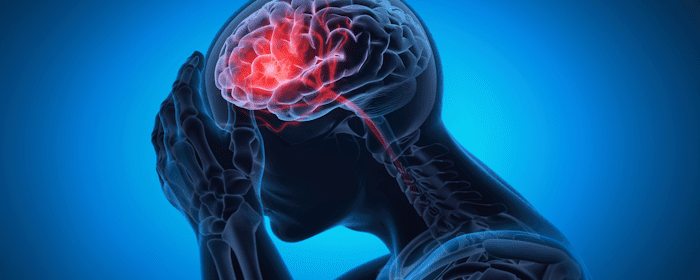

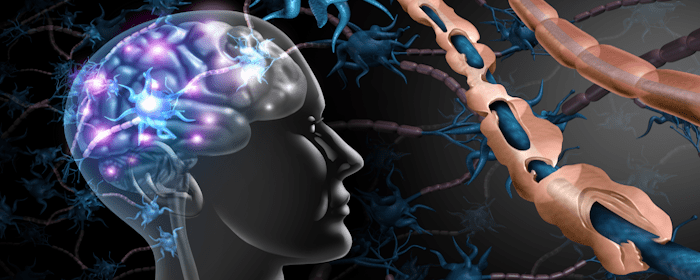
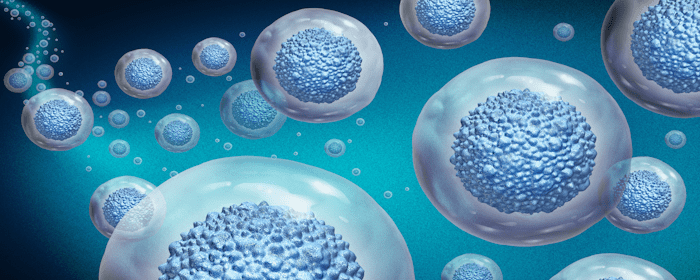
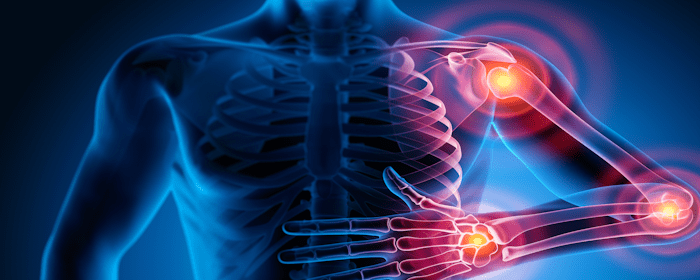
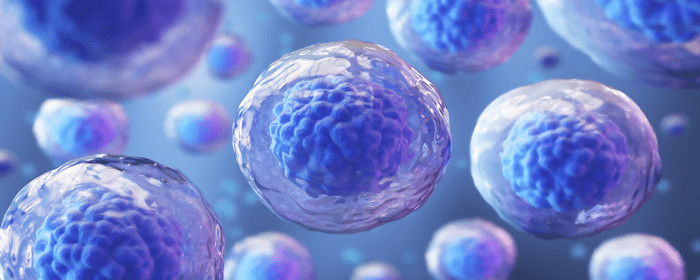

 St. Petersburg, Florida
St. Petersburg, Florida
